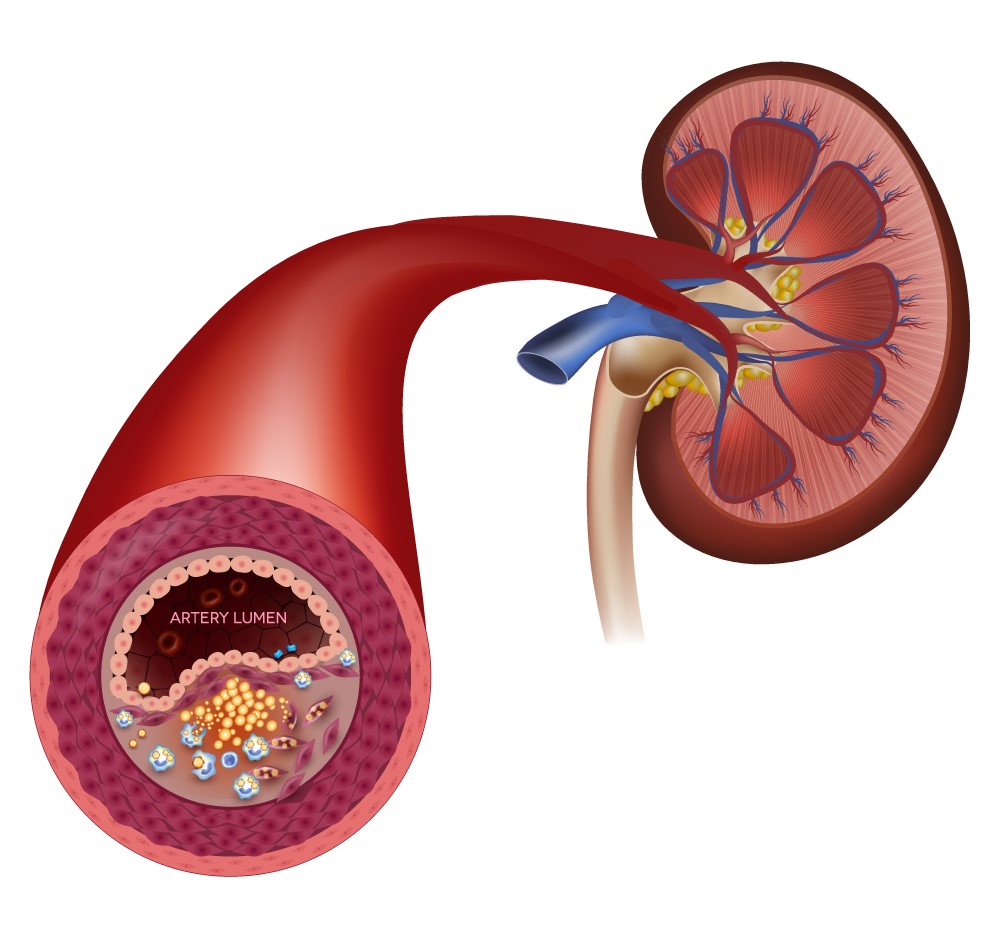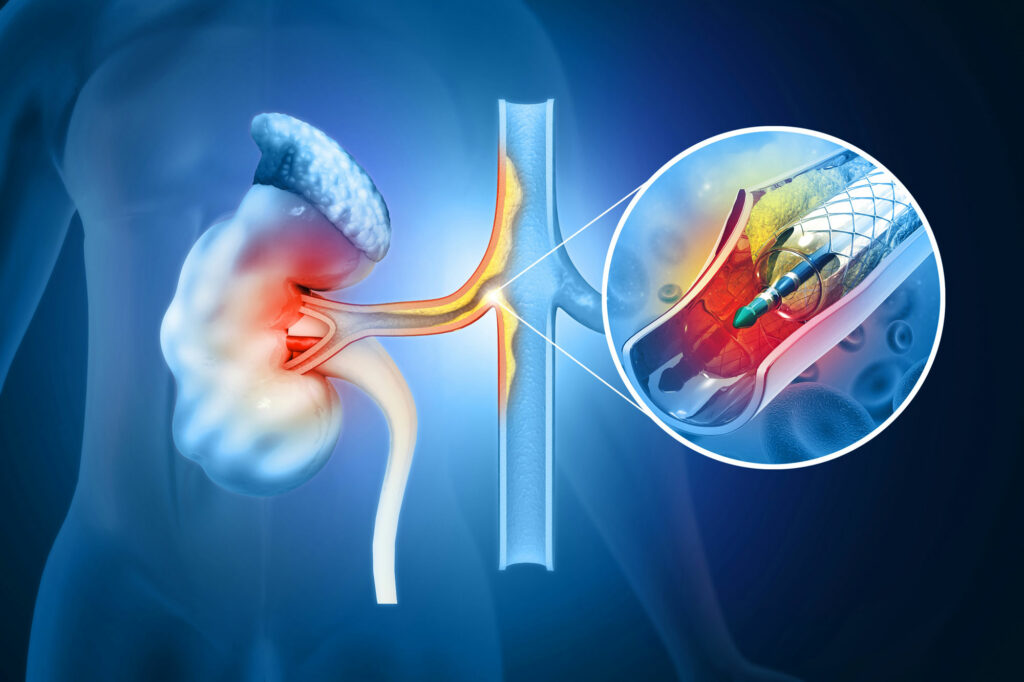What is renovascular disease?
Renal arteries originate from the Aorta and carry blood flow and nutrients to the kidneys. When these arteries are blocked, a condition called stenosis occurs. When this happens, the kidneys do not receive enough blood and oxygen.

Renal artery stenosis (narrowed artery)
Reduced blood flow.
These arteries can also be affected by several diseases, mainly atherosclerosis and, less commonly, renal artery aneurysms, fibromuscular dysplasia, and vasculitis.
Renovascular disease symptoms
Symptoms may be absent but in most cases, high blood pressure and progressive kidney damage can occur, which can even lead to the need for Hemodialysis.
Pain on the sides and blood in the urine should make us suspect this pathology.
Renovascular disease risk factors
In most cases, atherosclerosis is the main cause of renal artery disease.
The risk factors are tobacco, diabetes, high blood pressure, and high cholesterol and triglycerides.
The diagnosis is made with a complete medical history as well as a physical examination.
It is important to place the stethoscope on the abdomen to look for signs of normal arterial flow.
Other tests are a renal duplex, MRI, or a CT angiography of the aorta and renal arteries.
Renovascular disease treatment
Its treatment is generally endovascular and is carried out by performing a selective angiography, intravascular ultrasound, angioplasty, and stent placement, if necessary.
On fewer occasions, open surgery will be required to perform a bypass or bridge.
At ABC Medical Center’s Cardiovascular Center, we can provide you with specialized care. Contact us!
Fuente:
Dr. Salomón Cohen Mussali – Vascular and Endovascular Surgery specialist at ABC Medical Center.



